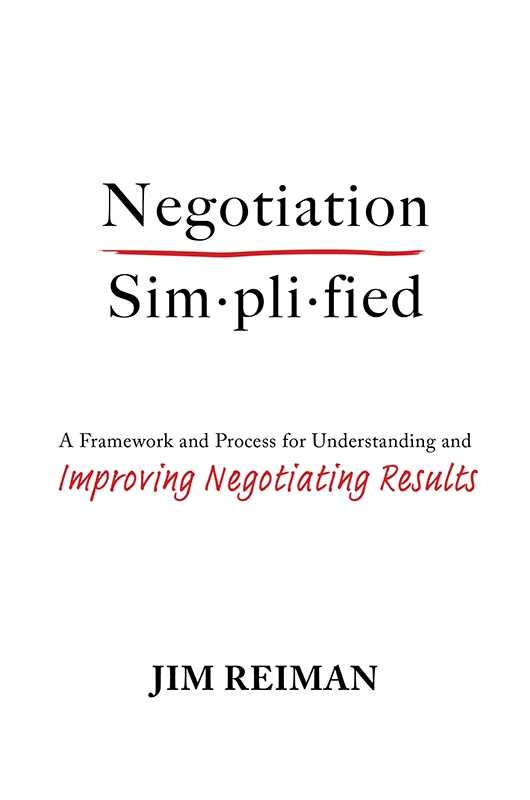Negotiation Simplified
A Framework and Process for Understanding and Improving Negotiating Results
Everyone engages in negotiations, and the valuable business guidebook Negotiation Simplified introduces the tools and skills that are necessary to reach mutually beneficial agreements within them.
Jim Reiman’s systematic business book reasons through its way through the negotiation process.
Asserting that effective negotiation requires four fundamental skills—goal-setting, preparation, listening, and self-awareness––Reiman introduces methods of establishing commonality with one’s negotiation partners in order to deliver inclusive, suitable results for both sides. The book’s action plans are memorable thanks to their concise, orderly presentations, in which procedures like the five steps of strategic planning, methods of communicating, and the factors to consider during preparation are clearly outlined.
Reiman also engages in complex discussions around topics like the requirements of effective goal-setting (which is differentiated from merely winning), and the parts of the preparation stage. Concepts like people’s needs and wants in a negotiation are excavated with clarity, as are tactics like listening and being self-aware. The book’s brief summaries of its main points, like the integral role of socializing during the negotiation process, or the classes of people that need to be identified and considered, are helpful as well, while its questions relevant to common negotiation factors (what problems need to be solved before a deal is made, for example) prove to be effectual takeaways.
This information is designed to be of utility to all people, as everyone, Reiman says, engages in negotiations. To support this perception, anecdotes from business leaders and diplomats across multiple industries about their own negotiation experiences are used to support the book’s theories. They convey lessons learned from mistakes and highlight the hallmarks of successful negotiations, like communication and socializing. How basic negotiation skills might be applied in different industries is also covered, with closing explanations that specify how individual stories connect to key points.
Clear, straightforward infographics are used to further explore concepts like the hierarchy of factors in the negotiation process, while cartoons, including one about bullying during negotiation, are present to make some information more engaging. The book’s tables also clarify its hypothetical examples, explaining them in an orderly manner. While its more complex quantitative techniques are less practical for everyday negotiations that the rest of the book, the corresponding section is limited; most of the text is widely applicable.
Based on the principle that negotiating is about reaching a collective, beneficial agreement for all of the parties involved, the valuable business guidebook Negotiation Simplified introduces the tools and skills that are necessary to get there.
Reviewed by
Edith Wairimu
Disclosure: This article is not an endorsement, but a review. The publisher of this book provided free copies of the book and paid a small fee to have their book reviewed by a professional reviewer. Foreword Reviews and Clarion Reviews make no guarantee that the publisher will receive a positive review. Foreword Magazine, Inc. is disclosing this in accordance with the Federal Trade Commission’s 16 CFR, Part 255.

